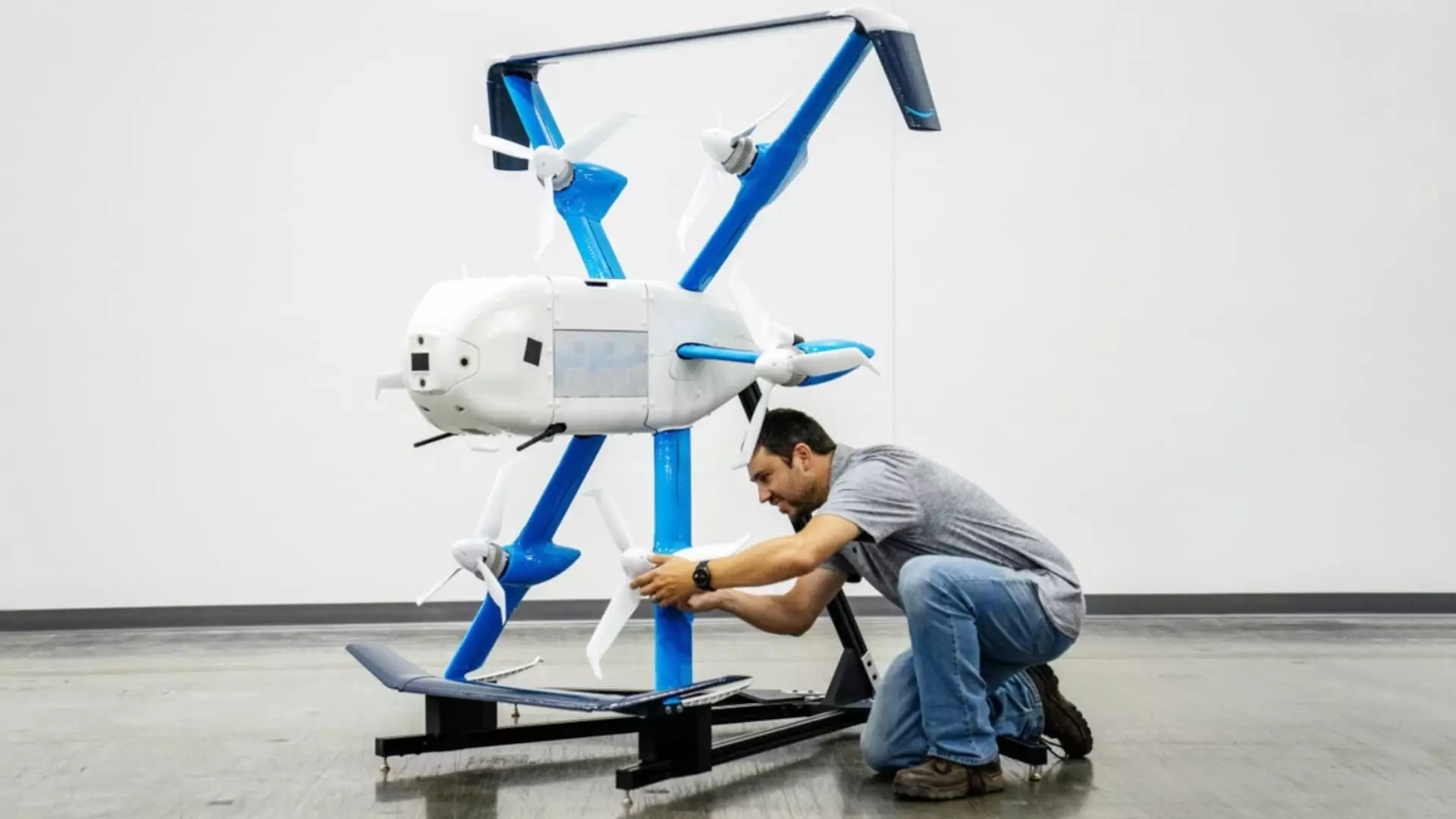The rapid evolution of drone technology has captured the imagination of businesses and consumers alike. At the forefront of this technological revolution is Amazon, which recently received regulatory approval from the Federal Aviation Administration (FAA) to deploy a new version of its delivery drone, the MK30. This marks a pivotal moment not only for Amazon’s Prime Air program but also for the entire logistics industry, emphasizing the potential of drones to reshape the way goods are delivered.
Unveiled in November 2022, the MK30 represents Amazon’s commitment to innovation within its drone delivery initiative. The MK30’s design incorporates several enhancements over its predecessors, most notably its ability to operate in light rain and its impressive doubling of flight range. These advancements are crucial, as weather conditions have often posed challenges for drone operations in the past. By improving the drone’s functionality under adverse weather conditions, Amazon positions itself to offer a more reliable service that could free it from the constraints that have historically limited drone delivery capabilities.
Additionally, the new regulations allow for flights beyond the visual line of sight, which signifies a major leap forward. This goes hand in hand with Amazon’s strategic vision to integrate drone technology into its extensive logistics network. With permission to operate over longer distances, the MK30 could soon become a stalwart in Amazon’s delivery arsenal, minimizing delivery times and enhancing overall customer satisfaction.
As of now, Amazon has commenced drone deliveries near Phoenix, Arizona, which demonstrates a proactive approach to establishing its operational footprint in new markets. This strategic move not only plays into Amazon’s desire to improve its logistics efficiency but also highlights the gradual expansion of its drone program, particularly following the shutdown of an earlier testing site in Lockeford, California. Such pivots showcase Amazon’s willingness to adapt its strategies in response to both regulatory feedback and operational outcomes.
The integration of drone operations near Tolleson, a planned hub for drone dispatches, is noteworthy. Operating out of existing warehouses optimizes logistics, ensuring that deliveries are fast and efficient. Furthermore, the FAA’s recent approval indicates a growing acceptance of drone technology within regulatory frameworks, a critical step towards mainstreaming this transformative delivery method.
Despite the promising developments, Amazon’s journey towards realizing a fully operational drone delivery service has not been without hurdles. The aspirations voiced by founder Jeff Bezos over a decade ago seemed optimistic at best. The company has faced regulatory delays, restructuring, and significant changes in leadership, which have all contributed to a slower-than-anticipated rollout. The loss of foundational personnel, including Amazon’s initial liaison with the FAA, adds another layer of complexity to its operations.
Moreover, local sentiments towards drone operations have presented challenges. Feedback from residents in areas where drone trials are taking place has highlighted concerns—particularly surrounding noise pollution. The mayor of College Station’s address to the FAA underscores the fact that community acceptance is key for the success of such initiatives. Amazon’s commitment to identifying alternate launch sites by 2025 speaks to its recognition of these community concerns and its willingness to engage in dialogue.
Amazon is not alone in its quest to dominate the drone delivery sector. The competition is fierce, with companies like Wing and UPS developing their own programs. Furthermore, various startups are also making waves in this emerging industry. This competitive tension can spur innovation, pushing Amazon to continuously refine its technology and enhance its delivery network.
As Amazon steps forward with the MK30 drone, it embodies both the potentials and pitfalls inherent in the rise of drone delivery. The future remains bright, with vast opportunities for innovation and efficiency awaiting. However, community relations, regulatory compliance, and competitive dynamics will play a pivotal role in determining just how quickly these prospects can transition into reality. The road ahead may be fraught with challenges, but the destination offers a transformative shift in logistics that could redefine how we think about deliveries in the coming years.


Leave a Reply